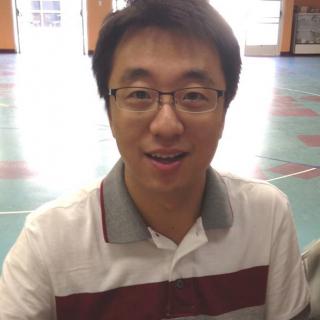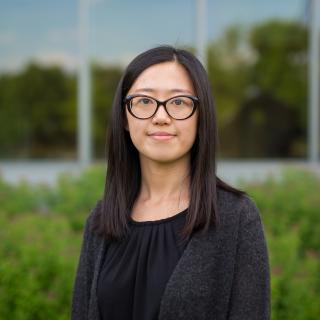Division Director

Craig Criddle is a Professor in the Department of Civil and Environmental Engineering at Stanford University, and a Senior Fellow at the Woods Institute for the Environment. He is the Institutional Co-I for CUBES at Stanford and the lead of the Biofuel and Biomaterials Manufacturing Division of CUBES.
Dr. Criddle is interested in the environmental engineering, science, and science literacy needed for clean water, clean energy, and healthy ecosystems. His research focus is environmental biotechnology. He is best known for large interdisciplinary field projects, studies of microbial
ecology in bioreactors, and work on microbial transformations of persistent contaminants. Some current projects include a field-scale evaluation of uranium remediation; DNA-monitoring of microbial community structure at full-scale biological wastewater treatment plants; development of membrane bioreactors for energy recovery and nutrient removal; and studies to elucidate the mechanisms and kinetics of microbial transformation of halogenated solvents. To promote science literacy, he worked with award-winning San Francisco cartoonist, Larry Gonick to write "The Cartoon Guide to Chemistry." "Cartoons can give us an intuitive feeling for the why, and deeper understanding can grow from that intuition."
Postdoctoral Scholar

Sulogna Chatterjee is a Postdoctoral Fellow in Criddle-group at Stanford University where she is working on Metabolic Engineering of autotrophic microorganism for better carbon efficiency and production of high-performance bioplastics.
Dr. Sulogna is a DST Inspire Fellow, holds a PhD degree in "Environmental Biotechnology & Microbiology" from "CSIR- Indian Institute of Chemical Technology", India. Her research interest is carbon conversion, waste valorization, bioprocess designing, bioreactor operations, fermentation technologies, bioenergy production and circular biorefinery systems.
During her PhD she has published several high impact research papers and has been awarded the “Research Excellence Award” by BRSI-India and "Best Research Fellow Award" by CSIR-India. She has also represented 'India' in C3E- Women in Clean Energy Education Empowerment Symposium organized by U.S Department of Energy, MIT Energy Initiative, Stanford Energy and Texas A&M University, 2019.

Sunggeun Woo earned his B.S. and M.S. from Yonsei University in South Korea. During his B.S. and M.S. programs, he studied in the civil and environmental engineering department and he narrowed down his research focus to environmental biotechnology in his M.S. program, where he wrote fifteen papers for about two and a half years including five of them as the lead-author. At that time, the research topics were various in the field of environmental biotechnology including wastewater treatment systems, isolation and cultivation of microorganisms and harnessing renewable bio-diesel from microalgae. Based on the wide range of understandings, Sunggeun Woo joined the Criddle group for his Ph.D. program in September, 2012 focusing on the Coupled Aerobic-anoxic Nitrous Decomposition Operation (CANDO) project. Sunggeun Woo participated in developing the CANDO process which produces a renewable energy, nitrous oxide (N2O), from nitrogen pollutants through microorganisms. During his Ph.D. program, Sunggeun Woo's main focus was to elucidate the microbial members that produce N2O and the metabolic pathways in them related to N2O and polyhydroxybutyrate (PHB) production. He graduated from Ph.D. program in January, 2018 and he is now continuing his research as a post-doctoral scholar in the Criddle group. His research is currently focusing on the recovery of renewable energy and materials from waste or wastewater using microorganisms.
Graduate Student

Vrinda Sharma is a graduate student in the CEE department at Stanford. She is working in the Criddle group on engineering autotrophic microorganisms for P4HB polymer production. She received a B.A. in Biological Sciences from Cornell University in 2022 and worked on impact of biocides like Triclosan on soil microorganisms Stenotrophomonas maltophilia in Hay Lab. Post graduation, she worked as Research Associate I in the Microbial Engineering team in Pivot Bio where she got interested in synthetic biology for environmental applications
Alumni

Calvin (Tae Hyun) is pursuing his PhD in Civil and Environmental Engineering at the University of Alberta, Canada, under the supervision of Professor Bipro Dhar. His research scholarly pursuits center around advancing microbial electrochemical technologies, focusing on the development of bioelectrochemical sensors for the detection of naphthenic acids in oil sands process water, as well as exploring microbial electrolysis cell-assisted anaerobic digestions and microbial electrosynthesis systems for the conversion of carbon dioxide into biomethane and for biogas upgrading applications. Presently, he is a visiting scholar in Professor Craig Criddle's laboratory at Stanford University. As part of the CUBES project, Calvin works under the mentorship of Professor Craig Criddle and Dr. Nils Averesch, where he is involved in converting methane and methanol into para-hydroxybenzoic acid (pHBA) using methanotrophs through metabolic and genetic engineering. His academic excellence is also recognized through prestigious awards such as the Izaak Killam Memorial Graduate Scholarship and the Canada Graduate Scholarship from the Natural Sciences and Engineering Research Council of Canada.

Kristian is an NSERC post-doctoral fellow in Environmental Engineering and Science at Stanford University. His current research focuses on: Hard-wiring bacteria in a microbial battery, salinity gradient energy production from a mixing entropy battery, and PHB bioplastic production from C. Necator. His PhD was in Chemical and Biological Engineering from the University of British Columbia in Vancouver.

Wakuna is a PhD candidate in the environmental engineering program working with Prof. Craig Criddle. Her research focuses on the microbial degradation of methane in mixtures (biogas and natural gas) for the production of biodegradable polymers called polyhydroxyalkanoates (PHAs). Wakuna is interested in understanding the impact these methane mixtures have on microbial communities, the dynamics between the microbial interactions under certain complex conditions, while optimizing the polymer production process and bacterial growth rates. In addition to research, Wakuna is quite passionate about tutoring and mentoring.

Wenyu Gu is currently a postdoc at Stanford University.

Jorge is originally from Chicago where he attended Loyola University Chicago and received his B.S. in Environmental Science with a Chemistry Minor. After his undergraduate studies, he attended Stanford where he obtained his M.S. in Environmental Engineering and where he has continued as a PhD student working with Professor Craig Criddle. His research focuses on biotechnology with an emphasis on efficiently utilizing waste streams to produce biological materials (e.g., bioplastics, biofuels). As part of the CUBES effort, Jorge's research involves identifying organisms that can thrive on the limited amount of resources available for long-range space travel.

Vince is a first-year Ph.D. student in chemistry at Stanford University; he is interested in creating biodegradable organic materials as well as designing materials processing techniques such as additive manufacturing in order to make functional parts from biodegradable materials feasible for replacing petroleum based plastics. His role in CUBES will be to create and optimism polymeric systems based on methanotrophic polyhydroxyalkanoate production for the closed-loop manufacturing of tools. Before starting his graduate work at Stanford, he studied mechanical engineering and chemistry at Colorado School of Mines where he created block copolymer materials for hydrogen fuel cell membranes and computed degradation mechanisms for small molecule bis-azide species. He also worked as a design engineer at RICOH where he designed, 3D printed, and tested small parts for improving large-scale ink-jet printer functions. Vince likes to hike and carve wood in his free time.

Max Perko is a third year chemistry undergraduate at Stanford, studying biosynthetic polyester vitrimers for additive manufacturing in the Waymouth lab. His research is being performed in conjunction with that of Vince Pane (of the Waymouth lab) and the Criddle lab (Stanford Biology), for the Center for the Utilization of Biological Engineering in Space (CUBES) on their Mars exploration project.

Tiago is a visiting doctoral student from the Humans on Mars project of the University of Bremen, Germany. As a part of his doctorate project, he is looking to convert cyanobacterial biomass produced on Mars from in-situ resources into a plant fertilizer and other products of interest. To carry out this conversion both anaerobic digestion and bioelectrochemical systems are employed and explored within a wet lab and modelling context. The overarching goal is to explore Mars sustainably by harnessing local resources and reducing shipped payload mass. During his research stay, he will be working on the bioplastic production by C. necator and the modelling of the cyanobacterial biomass processing.
Chris Szikszai worked with the Waymouth group, summer of 2017, testing feasibility of extruding and printing PHBV (poly-3-hydroxybutyrate-co-3-hydroxyvalerate). Aided by Professor Dan Strauss from SJSU and Naomi Clayman, Chris used analytical techniques such as DSC, GPC, and an Instron tensile tester to characterize the biopolymer: before extrusion, prior to printing, and after printing.
Robert Waymouth is the Robert Eckles Swain Professor in the Department of Chemistry at Stanford University. Dr. Waymouth investigates new catalytic strategies to create useful new molecules, including sustainable polymers, synthetic fuels, and bioactive molecules. In one such breakthrough, Professor Waymouth and IBM researcher Jim Hedrick opened a new path for production of environmentally sustainable plastics and improved plastics recycling, earning recognition in the 2012 Presidential Green Chemistry Award.
The Waymouth Group applies mechanistic principles to develop new concepts in catalysis, with particular focus on the development of organometallic and organic catalysts for the synthesis of complex macromolecular architectures. In organometallic catalysis, the group devised a highly selective alcohol oxidation catalyst that selectively oxidizes unprotected polyols and carbohydrates to alpha-hyroxyketones. The Waymouth group pioneered the development of catalysts that can access multiple kinetic states during a polymerization reaction in order to control sequence distribution. They devised a novel strategy for the synthesis of elastomeric polypropylene utilizing a metallocene catalyst whose structure was designed to interconvert between chiral and achiral coordination geometries on the timescale of the synthesis of a single polymer chain.
In collaboration with Jim Hedrick of IBM laboratories, the Waymouth Group has developed an extensive platform of organic catalysts for the controlled ring-opening polymerization of lactones, carbonates and other heterocyclic monomers. Mechanistic studies of nucleophilic N-heterocyclic carbene catalysts revealed an unusual zwitterionic ring-opening polymerization method which enabled the synthesis of high molecular weight cyclic polymers, a novel topology for these biodegradable and biocompatible macromolecules. In collaboration with the Wender group, the Waymouth group has devised selective organocatalytic strategies for the synthesis of functional degradable polymers and oligomers that function as "molecular transporters" to deliver drugs and probes into cells. These efforts combine elements of mechanistic organic and organometallic chemistry, polymer synthesis, and homogeneous catalysis to rationally design new macromolecular structures.

Liangzi is a graduate student in Criddle-group at Stanford University. She is working on improving the metabolic function in autotrophic microorganisms to enhance carbon efficiency and produce high-performance bioplastics as part of CUBES.
She is interested in sustainable biomanufacturing, bioremediation, as well as carbon capture and utilization.